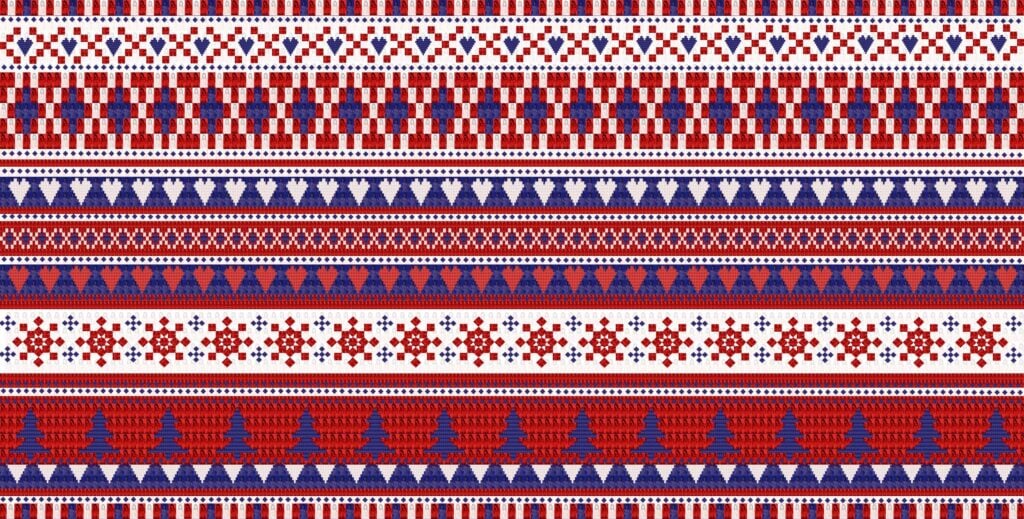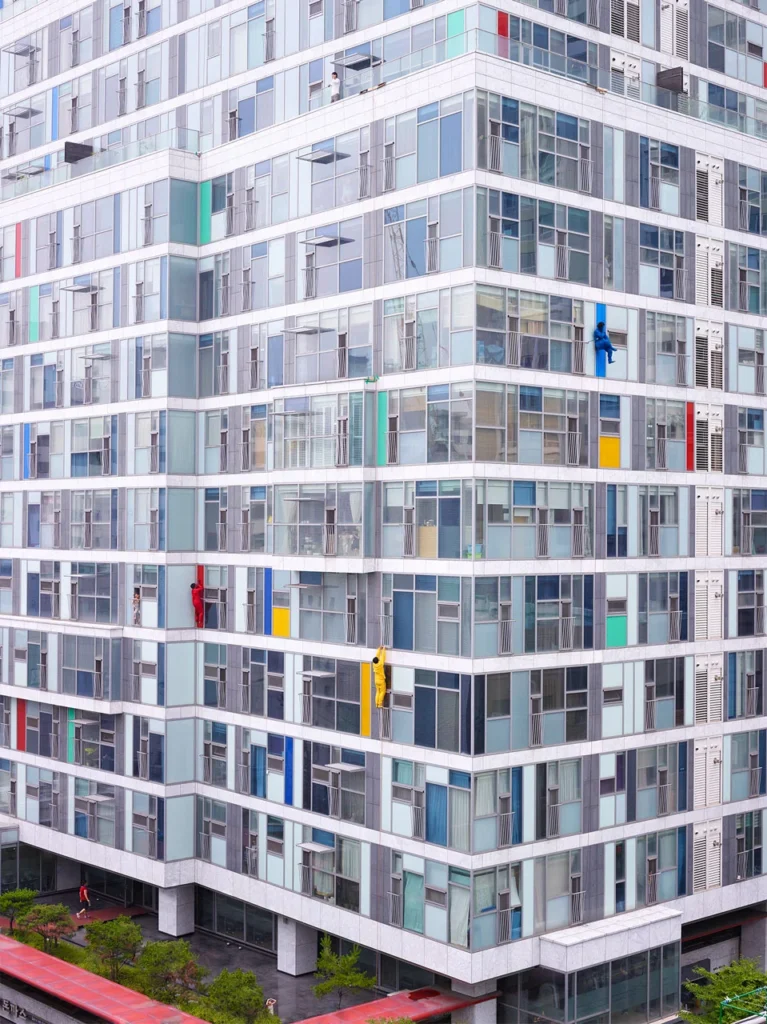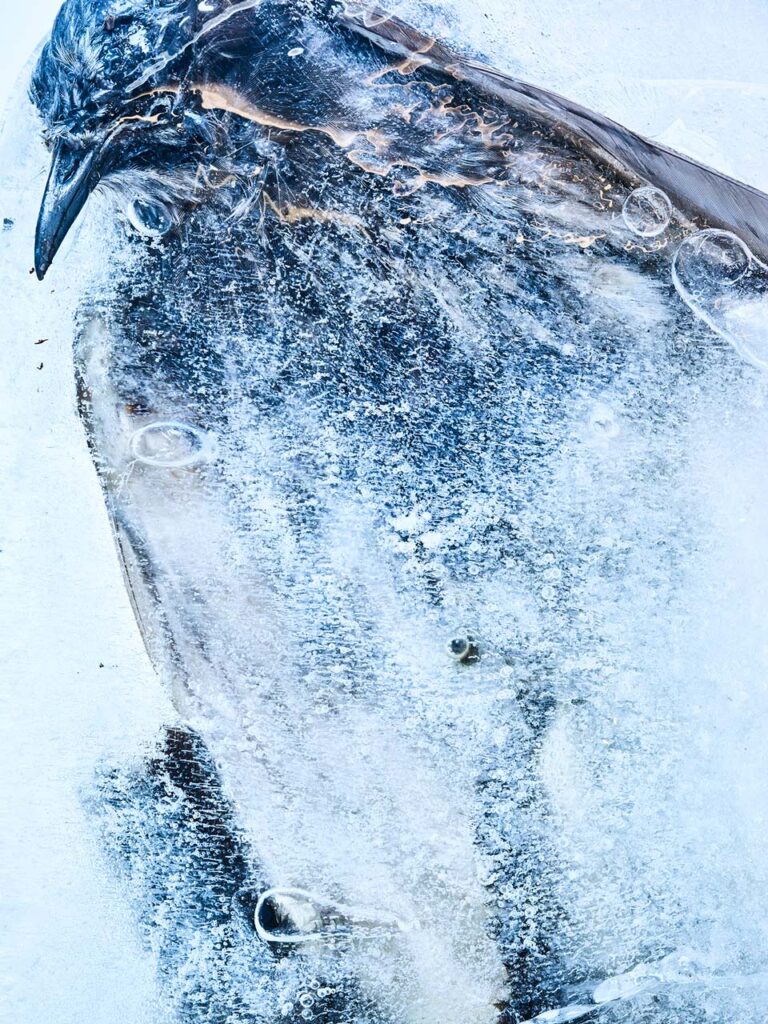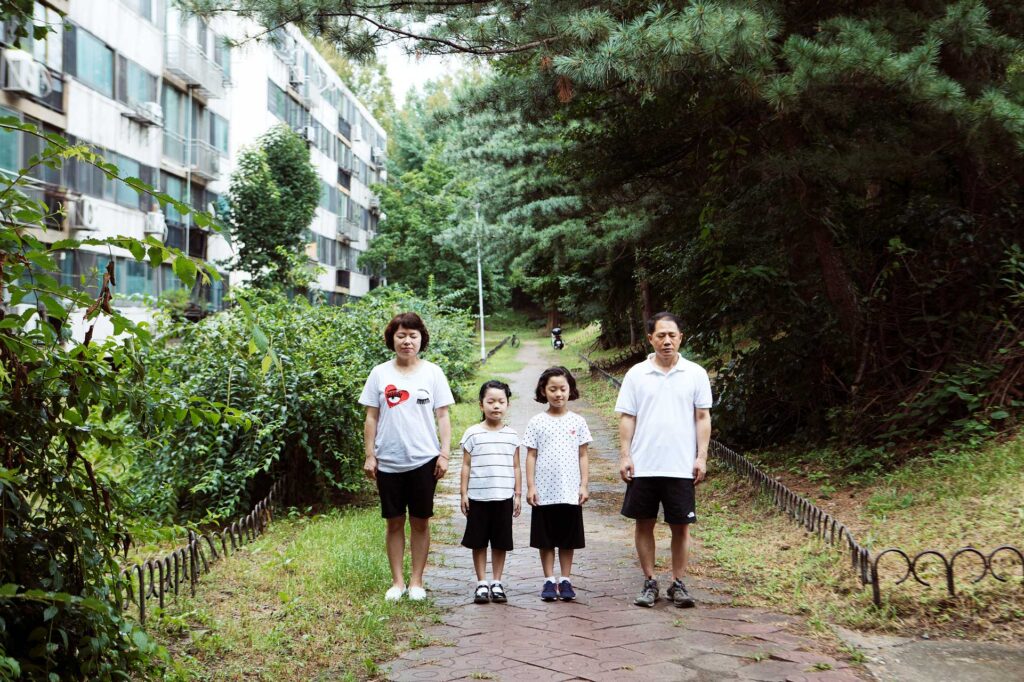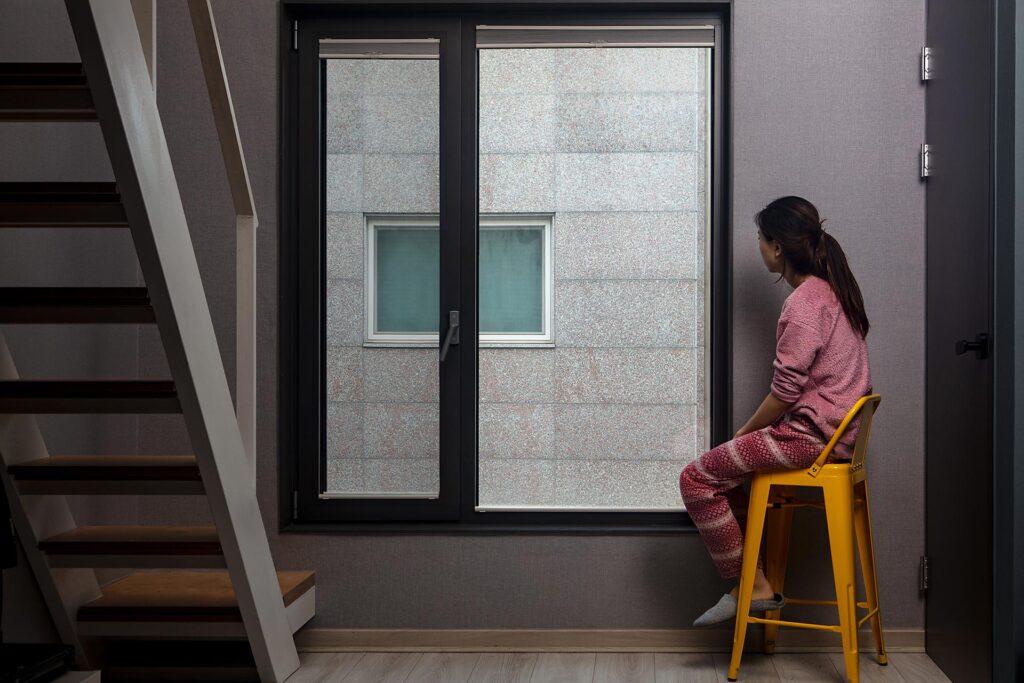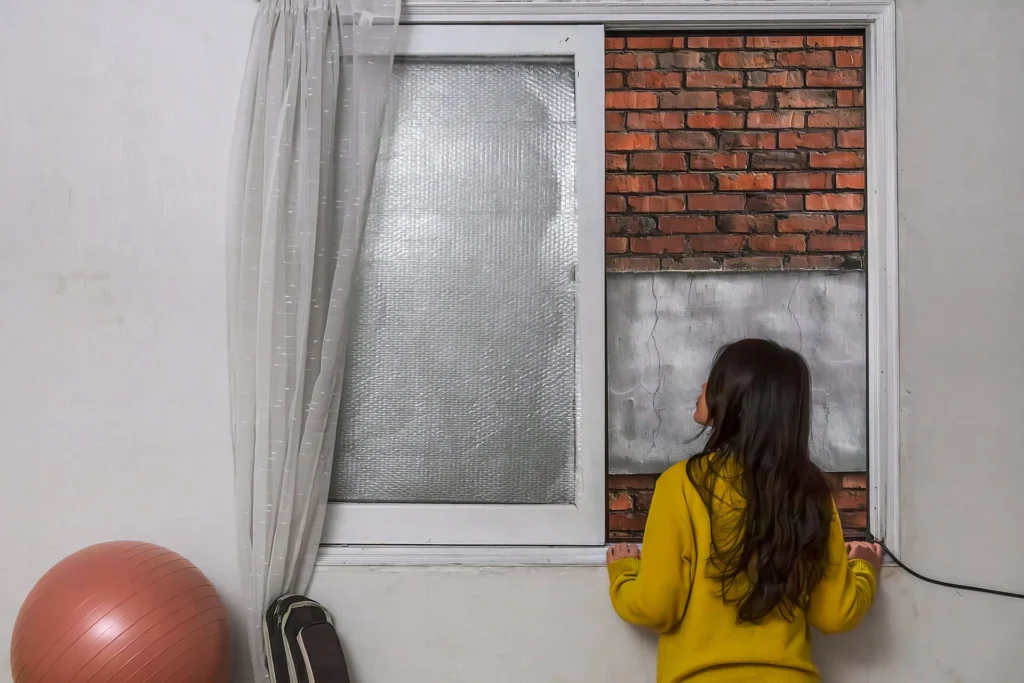Au-delà du cadre : perspectives coréennes
Vernissage le mardi 18 novembre à partir de 20h00

Exposition du 18 novembre au 31 décembre 2025
–
Une exposition dans le cadre du Festival GLAZ
Rencontres internationales de la photographie #2
Des actes d’amour et de rébellion
Rennes-Bretagne
Carte blanche proposée à la commissaire d’exposition coréenne Joanne Junga Yang, cette exposition collective met à l’honneur cinq jeunes artistes coréen·nes, figures émergentes de la nouvelle vague de la photographie contemporaine en Corée du Sud réuni·es pour la première fois en France. Elle rassemble cinq voix distinctes : celles de Yisak Choi, Hyo-Jin In, Sung Min Lee, Hyun-Doo Park et Sun Hi Zo.
Chacune des œuvres exprime des expériences personnelles et collectives à travers la photographie, transformant le médium en un outil de réflexion et de résistance. Bien que leurs styles diffèrent, ces artistes sont uni·es dans leurs efforts pour remettre en question et transcender les cadres – littéraux et symboliques – qui enferment nos vies. Yisak Choi examine les limites visuelles de la vie urbaine, Hyo-Jin In critique le genre, le désir et le consumérisme à travers une subversion esthétique provocante, Sung Min Lee plonge dans la nostalgie et la mémoire urbaine, Hyun-doo Park confronte l’aliénation systémique et les structures de pouvoir et Sun Hi Zo médite sur le deuil, la disparition et l’éphémère.
Leurs œuvres reflètent un contexte coréen marqué par une modernisation rapide, des valeurs sociales changeantes et des symboles culturels profondément enracinés. Pourtant, les questions qu’elles posent ont une résonance universelle. En sortant du cadre, ces artistes invitent à se confronter à ce qui se trouve juste en dehors du visible. Si l’exposition présente un échantillon représentatif de la photographie coréenne contemporaine, elle permet aussi d’avoir une meilleure compréhension de la manière dont les images portent le poids de notre époque, de notre société et de nous-mêmes.
Les artistes
Hyo-Jin IN
Bio
Hyo-Jin IN was born in Seoul in 1975 and currently lives and works in Seoul. She earned her undergraduate degree in Cultural Anthropology from Hanyang University and later studied photography at the Graduate School of Art and Design at Sangmyung University.
She held her first solo exhibition in 2004 at Kwanhoon Gallery, titled: The Paradise Island. Since then, she has presented four more solo exhibitions: ‘High School Lovers: Stiletto’ at Gallery Kunst Doc in 2007, ‘Unstable Order’ at Sungkok Art Museum in 2009, and ‘Hot Punk Project_Preview’ at Seojin Artspace in 2017 and ‘Hot Punk Project_The Signature Lines’ at Space 22 in 2020 — totaling five solo exhibitions to date. She has also actively participated in numerous group exhibitions at prominent institutions including the Santa Barbara Museum of Art(USA), Houston Museum of Fine Arts(USA), Konica Plaza Tokyo(JAPAN), SOMA Museum of Art, Sungkok Art Museum(KOR), Busan Museum of Art, Gallery Paris-Beijing, and the National Museum of Modern and Contemporary Art, Gwacheon. She was selected as an <Emerging Artist> by the Seojin Artspace Creative Support Program and the Arts Council Korea. She is also the recipient of the Sungkok Art Museum’s <Tomorrow’s Artist Award> and the <Photography Criticism Award> in the art category. Her works are included in the collections of the Santa Barbara Museum of Art, Sungkok Art Museum, National Museum of Modern and Contemporary Art Art Bank, SOMA Museum of Art, DongGang Museum of Photography, and Space 22.
About
Hot Punk Project_Signature Lines
After a preview exhibition showcasing an overview of the ‘Hot Punk Project’ in 2017, the project was formally presented in 2020 under the title ‘Hot Punk Project_Signature Lines.’ The title ‘Signature Lines’ refers to the dual meaning of the term: it represents my signature line, which is created by using cards to form patterns, as well as the signature lines of luxury brands that reflect the consumer desires of contemporary women.
The Hot Punk Project involves collecting promotional cards for outcall massage services that are stuck on streets or vehicles. Through these cards, the project explores themes such as the sexual fantasies of Korean men, prostitution, and the consumer desires of contemporary women. It also addresses the hidden prostitution industry embedded deeply in our daily lives. The work presents these themes through colorful and beautiful abstract patterns, inspired by stripe patterns, Missoni, and Fair Isle motifs. By doing so, it expresses the dark undercurrents of urban life hidden behind the glamour of capitalist society in a paradoxical manner. Therefore, the more vibrant and beautiful the visible patterns, the stronger the paradox within the artwork.
Now, they begin to appear as a new object: luxury shoes. I have transformed parts of the female body into patterns to create luxury shoes such as Christian Louboutin, Jimmy Choo, and Manolo Blahnik. The women from the cards are gradually transitioning from colorful abstract color field patterns to objects of our daily life.
The reason I chose shoes as an everyday object is due to the numerous connotations they carry. Historically, women’s feet have been a point of sexual attraction for men, symbolizing both sexiness and fetishism. In fairy tales like The Wizard of Oz and Cinderella, shoes are used as tools to show women a new world, help them obtain what they desire, or elevate their social status. Particularly, the practice of foot-binding in China was a selfish and violent product of men’s sexual desires. Thus, shoes become a highly symbolic object that encompasses women’s desires, the longing for sexiness, expectations of glamour, as well as male violence and obsessive fetishism.
Hyundoo PARK
Bio
In the early 2000s, Hyun-doo Park graduated from Chung-Ang University’s College of Fine Arts with a bachelor’s degree and from MFA, the School of Visual Arts photography and related media in New York, and has been working on the series. He has been selected as a supporting artist for the 8th Park Geon-hee Cultural Foundation’s Daum Artist Award, the 1st Surim Cultural Foundation’s Shurin Photography Culture Award, the National Museum of Modern and Contemporary Art’s Goyang Art Studio, Seoul Museum of Art’s Nanji Art Studio, and SeMA.
About
Goodbye Strangers
The essential alienation of modern people> is expressed through photographic performances. The photographs of the characters struggling against the backdrop of the building that symbolizes the power and the system of ‘alienation from power or authority’ and the structural installation space that represents the system.
First, the city’s buildings reveal their original beauty and at the same time contain the symbolism of power. I think this is the same as modern people who feel alienated but pursue various desires inside. I wanted to express a psychological connection by putting the images of the struggling soldiers in one scene.
Second, a structure symbolizing a large-scale system painted in gold, a symbol of power, was installed, and the image of greeting each other was filmed in the form of a project, expressing the identity of individuals who feel alienated from the system of power.
In this way, he develops various alienations of modern people through the series, and expresses the anguish and trials of modern people through the external system or from the inside of human beings in a performative way.
Sun Hi ZO
Bio
Sun Hi Zo (b. 1971) explores themes of loss, memory, and transformation through photography. In Daisy; Cosmos Mea (2022) and Frozen Gaze (2018~), she examines the relationship between time and eternity by capturing withered flowers and birds encased in ice. Her Planet (2024~) series reinterprets decay as part of a cyclical process by presenting rotting fruit as celestial bodies. Recently, she has been working on a desert-based project that expands concepts of visibility, traces, and existence. Based in Seoul, she studied at Yonsei and Hongik University and currently teaches at Kyungil University, exploring the experimental possibilities of photography.
About
Frozen Gaze
Frozen Gaze delves into the fragile boundary between memory, loss, and preservation. When my father passed away, he appeared in my dreams as a bird—always flying away, an elusive presence I could never fully grasp. This profound absence became the foundation of my work, where birds serve as vessels of both memory and departure, suspended between earth and sky, life and death.
The birds in this series were not sacrificed for art but were road-killed specimens I collected. Freezing them was an act of preservation, a quiet resistance against the erasure of unnoticed lives. The ice acts as both a medium of preservation and dissolution, capturing a moment of stillness while inevitably melting, a metaphor for how memories fade, resurface, and transform.
Drawing from Georges Bataille’s ‘informe’ and Julia Kristeva’s ‘abjection’, my work investigates transformation through fragmentation. The ice fractures the birds’ forms, creating a liminal space where presence and absence coexist. As the ice melts, the water resembles a bird’s tears, evoking both mourning and renewal.
Each bird embodies a distinct symbolism: the cuckoo signifies hidden boundaries, the crow serves as a messenger between the living and the lost, and the shrike captures memories caught on the thorns of time. The coot offers an echo of stillness, the bulbul sings of rebirth, and the pheasant reflects the quiet erosion of beauty. The falcon, with its shattered flight, represents freedom arrested at its peak.
Through Frozen Gaze, I explore the tension between disappearance and remembrance, the ephemeral and the eternal. I invite viewers to reflect on the delicate and evolving nature of existence, to find meaning in what remains when the ice melts—the subtle remnants of memory, the whispers of the past, and the enduring presence of what cannot be entirely forgotten.
Sung Min Lee
Bio
Sung Min Lee studied film directing in undergraduate (Hongik University) and graduate school (Chung-Ang University), and has participated in several shorts and feature-length films. Her short film (2005, 25 min) was the official selection in the 6th Jeonju International Film Festival. She was Best Artist in Photography at the Belt 2016 Project Competition, which was followed by a solo exhibition. Since then, her work includes photography along with documentary filmmaking. (2024, 108 min) is her first feature-length documentary.
About
Growing up in the city, I became accustomed to seeing landscapes disappear. The fast pace of urban life often leaves little room to pause and appreciate what’s around us. But as I began to reflect on my surroundings, I found myself drawn back to places from my past. The Gaepo-dong Jugong Apartments in Gangnam, built in the 1980s to address housing shortages, are a reminder of this. Initially developed to foster community, these aging apartments now stand out, overshadowed by newer, taller buildings that symbolize the area’s rapid development and educational fervor. While the neighborhood may look the same from afar, up close, I began noticing the details that had once escaped me. As a child, I wanted to leave, but now, wandering these streets, I felt a nostalgia I hadn’t known before.
My photography became a way of revisiting the scenes of my childhood, seeking traces of what was left behind. With each visit, however, a sense of emptiness grew, as the familiar landscapes had changed irrevocably. The things I searched for were no longer present, only a void that remained. In trying to recapture the past, I encountered memories and landscapes that had already faded.
Despite this, I started to see what had persisted—old trees and objects that still held their place, overlooked yet resilient. In these isolated landscapes, the subjects remain, their presence deepened by the passage of time. These overlooked scenes carry a sense of individuality that can’t be found in the new apartment complexes, telling stories of a neighborhood that once was. Though I may never find exactly what I’m looking for, my search has shifted my perspective, helping me to see a different landscape within the familiar—one that endures even as everything else changes.
Yisak Choi
Bio
Yisak Choi earned a master’s degree in the Department of Photography and Video Media at Sangmyung University Graduate School, and began his career as an artist after winning the Best Portfolio Award at the Donggang International Photo Festival in 2010. Since then, he has held nine solo exhibitions, participated in more than 60 group exhibitions, including the Daegu Photo Biennale, and was invited to overseas exhibitions in the United States, Italy, Greece, Japan, and Hong Kong. Yisak Choi’s artworks encourage people to think deeply about life, death and life priorities, and to experience synesthesia in the exhibition hall by adding inventive installation elements to the flat media such as photos.
About
The Bigger Wall
‘The Bigger Wall’ began by looking for people living in houses with blocked views, as in my case. I captured images of the residents in the room with a window with a blocked view in the background and interviewed them. I realized that the loss of view was a complex and huge problem. The entire wall, which was only partially visible through the window, was made huge and installed so that the audience could see through a transparent window. In addition, as the audience approached, the interviews of the residents were heard.
Humans interact sensibly and primally with the outside through sight. Therefore, looking at does not end in looking at it, but can be a time for constant conversations between the object and the beings visible beyond. However, if the view is blocked, this does not begin… Humans build a building, but that building makes humans again. I hope that the meaning of their lives will often arise by being able to look far away from where they stay.

